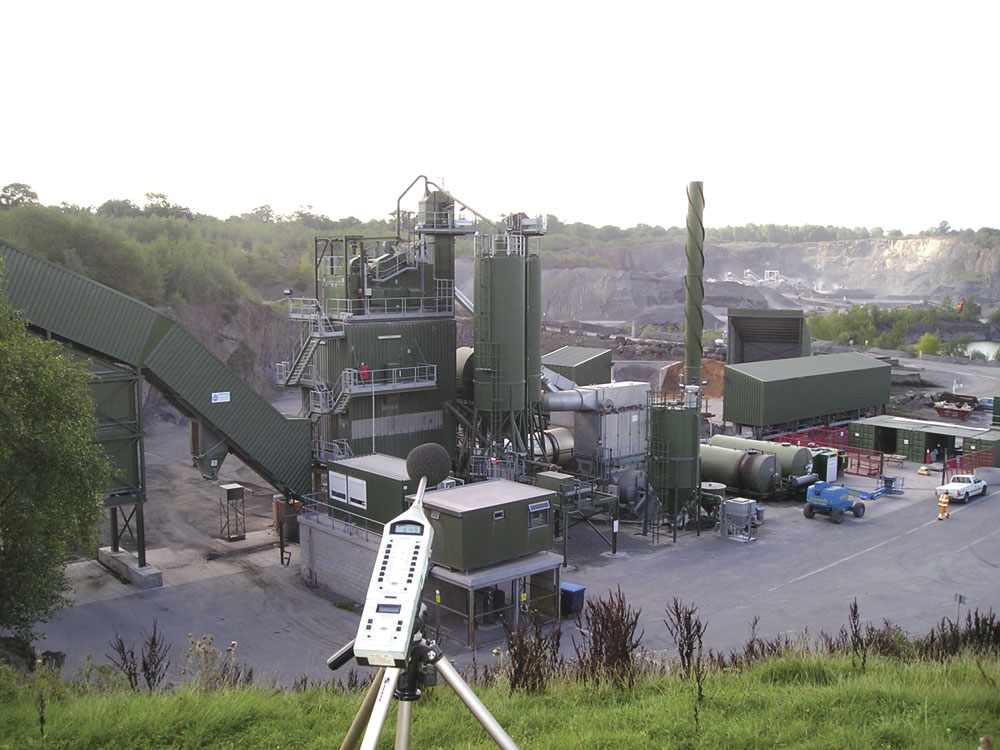Noise Control In Quarries

Noise mitigation and best practice
By Dr Paul Cockroft, senior partner, WBM Noise Consultants
Noise control at quarries is required to address two main issues: first, the effect on the hearing and general well-being of employees and visiting personnel within a site; and secondly, the environmental noise that may affect people living in the vicinity of a quarry and other adjacent potentially noise-sensitive properties and areas outside a site.
The potentially damaging effects of noise on employees within the workplace need to be addressed and their hearing safeguarded. This is a legal requirement under The Control of Noise at Work Regulations 2005, which aims to protect persons against risk to their health and safety arising from exposure to noise at work. There are duties for both the employer and employees, which include risk assessment and the elimination or control of exposure to noise in the workplace. Hearing protection, maintenance and use of equipment, health surveillance and training all have a part to play in the process.
External noise can affect persons living, working and at leisure in the vicinity of a quarry. Most quarry activity takes place during the normal working day, although night-time operations and early-morning starts can introduce additional problems. The primary factor in determining whether or not a noise is likely to give rise to environmental consequences is its loudness in relation to the existing noise climate. For mineral extraction sites in England, the most important document is Minerals Policy Statement 2: ‘Controlling and Mitigating the Environmental Effects of Minerals Extraction in England’, and in particular Annex 2 ‘Noise’. Noise limits contained in planning permissions for specific sites will also need to be taken into account along with the general advice in MPS 2.
While noise from most sources is often apparent simply by walking past the plant, it is not always easy to know the impact of the various sources at some distance. Sources that sound loud in proximity to them, and which could have significant impact on someone working nearby, can be dominated by the noise of a seemingly quieter but physically larger source when heard at a distance. For example, a small pump or motor can sound very loud when standing close to it, but its radiating area is small and the overall energy output will also be small, whereas a physically large source has a much larger radiating area.
At most sites, processing takes place in a fixed location and will be continuous for the life of the site. At some sites, the fixed processing plant may be relocated as part of a development proposal to extend the workings, either by moving into a new area or by deepening the quarry. In any event, these would normally be regarded as fixed-plant items in terms of environmental noise, even if they have a semi-permanent designation in planning terms. Since fixed plant can remain in one place for a considerable time, it is particularly important to consider the levels of noise that might arise and the hours of operation that are appropriate in any particular noise climate. For example, an asphalt plant that operates quite successfully during the daytime might give rise to justifiable complaints if it operated regularly at night.
Many of the successful noise-mitigation measures used in quarries are as a result of progress by the machinery suppliers, spurred on by the growing demand for quieter sites and also by the legislation covering hearing protection and environmental effects. Others are the result of site personnel ‘having a go’ at reducing noise from installed plant. However, there are also many examples of failure, such as thin panels attached directly to vibrating structures, which can increase rather than decrease noise.
Applying noise-reduction measures to existing plant is usually not as easy or effective as ensuring that the plant is designed with low noise output in the first place. A plant engineer or manager can also run some risks if there are changes in the original specification. If a health and safety issue were to arise as a result of a change, the fault could lie with the person responsible for making the change. Similarly, some changes to plant may lead to lower efficiency or overheating of plant items. In short, operators should look for sensible reductions in noise but be aware that other consequences may result.
Examples of good practice in noise reduction can be found in Appendix 2B of MPS 2 Annex 2 ‘Noise’ and in BS 5228-1: 2009 ‘Code of practice for noise and vibration control on construction and open sites’, Part 8 ‘Control of noise’.
As well as the formal guidance set out in policy statements and regulations, Internet searches will reveal plenty of information that may prove useful to those considering noise-control measures. It is important, however, that any references are checked since guidance referred to on websites may be out of date or not directly applicable to particular circumstances on a site. If appropriate, professional advice can be sought from both multi-disciplinary environmental companies or specialist noise consultants.


